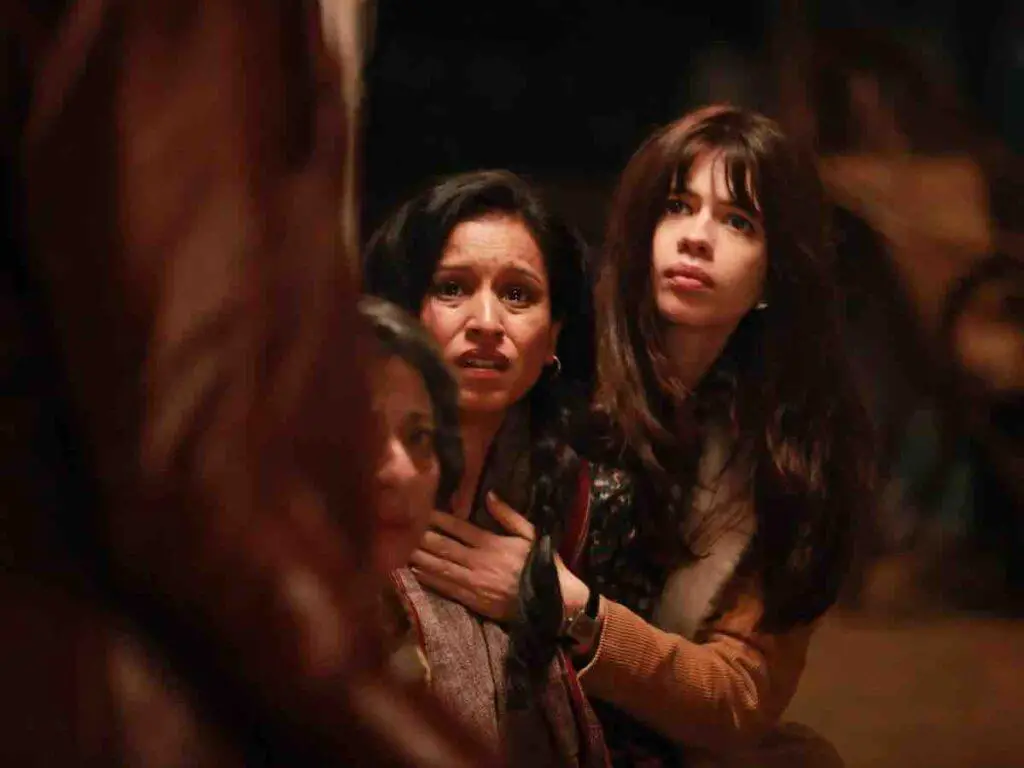Films of the horror genre are naturally predisposed to provoke dread, disgust, and fear in the audience. Director-writer Konkona Sen Sharma’s A Death in the Gunj deliberately begins in such a direction. Set in McCluskiegunj, 1979, the film promptly opens with a clinical portrayal of two men discussing a suitable position to arrange a body inside the trunk of an Ambassador car. Then, a premonition comes to pass in a shot of a signage that reads ‘K.C.M. Hospital and Morgue.’ A sign pointing to a tragedy assuming a haunting form as the narrative recalls events that occur over a fleeting but enduring period of seven days.
A Death in the Gunj closely follows the fragile and grieving Shutu at present navigating a break after his college exam at the residence of his aunt’s family home. His father’s recent passing appears to greatly affect his mind and gentle spirit and he attempts to cope during the visit, spending time with his cousin’s daughter Tani, naturally forging a connection with her childlikeness unlike the adults that surround him. Throughout the stay, Shutu’s cousins and their friends engage in common, everyday slights (“There’s a kid standing right here”, “You’re so pretty… You could be a girl”) and disparaging behavior that belittles and gradually overwhelms him. These actions are never properly dealt with and processed among the family dynamic.
Eventually, Shutu is not the only victim. The women: Tani’s mother, Bonnie, Mimi, Bonnie’s friend and recipient of Shutu’s unrequited feelings, including Tani herself, are trivialized on account of gender roles and stereotypes that especially persist in Indian communities. The film presents and situates horror in the minutiae of everyday life – isolated instances that might go unnoticed by many or brushed aside accumulate and such accumulations are given specific attention by camera and direction.
During a game of Kabaadi, a charged moment escalates into a serious brawl between Shutu and the friend of his cousin, Vikram. The women are aghast, pleading for both to stop and for the other men present to intervene. The camera rests on their dismay. Later, at the dinner table, Tani offers to explain the situation after Shutu’s uncle notices the injury and the tense atmosphere enveloping the family.
In this scene, the gravity of the situation is further heightened when both his uncle and aunt venture to undermine the brawl with their remarks: “Kabaddi! No wonder!” “You know how it is! Boys will be boys!”
Sen Sharma’s direction shrewdly suspends this moment through the breaking of the fourth wall with Tani’s reaction. For just a moment before the shot cuts, Tani looks up from her plate and looks directly into the camera.
This precise choice foregrounds the disturbing and conditioned nature of the parent figures’ statements and communicates an implication outside of the narrative’s diegesis.
Sen Sharma is consciously perceiving the violence and horror observable in the family’s interactions.
A Death in the Gunj’s exploration of horror is therefore cleverly constructed as a force unfolding a social commentary that permeates the film. A prank on Shutu during a staged séance or a brief driving lesson that intensifies into an abusive discipline by his cousin Nandu underline the trappings of toxic masculinity and patriarchal power. Shutu’s gentleness and vulnerability are preyed upon by male figures who also deny him his privacy of grieving and processing the loss of his father. When Bonnie tries to evoke sympathy from her husband during a personal moment, Nandu dismisses both her and her consideration (“23 is not a kid”, “he needs to toughen up and he needs to take care of his mother”) and leaves her on the steps outside of the house alone, engulfed by darkness.
The intimate and sympathetic depiction in Bonnie’s action parallels many other intimate moments that are contrasted against the horrors present in the film. Accompanying these moments is the cinematography itself: a softly lit shot of Tani’s foot, a backshot of Shutu and Tani in an old bathtub, Shutu burying a dead insect and paying his respects with Tani, a shot of Shutu’s hand on Mimi’s foot as he attempts to alleviate the pain after a strain, among others.
The visual storytelling in enhancing the narrative execution in tandem with the simple screenplay is perhaps the film’s strongest merit. Sen Sharma balances the two exquisitely, allowing the camera to further express and reveal the subtleties that shape the dynamics of the characters as well as the larger issues that pervade the film rather than heavily rely on the screenplay to convey the film’s intentions.
Ultimately, the horror reaches a culminating point for Shutu despite his best efforts. The issues that confine and engulf his struggle remain ever present today. A Death in the Gunj captures the burdens and demands vulnerable individuals face amidst everyday life and this is largely due to director-writer Konkona Sensharma’s acute vision and understanding of the human condition along with human interactions.




